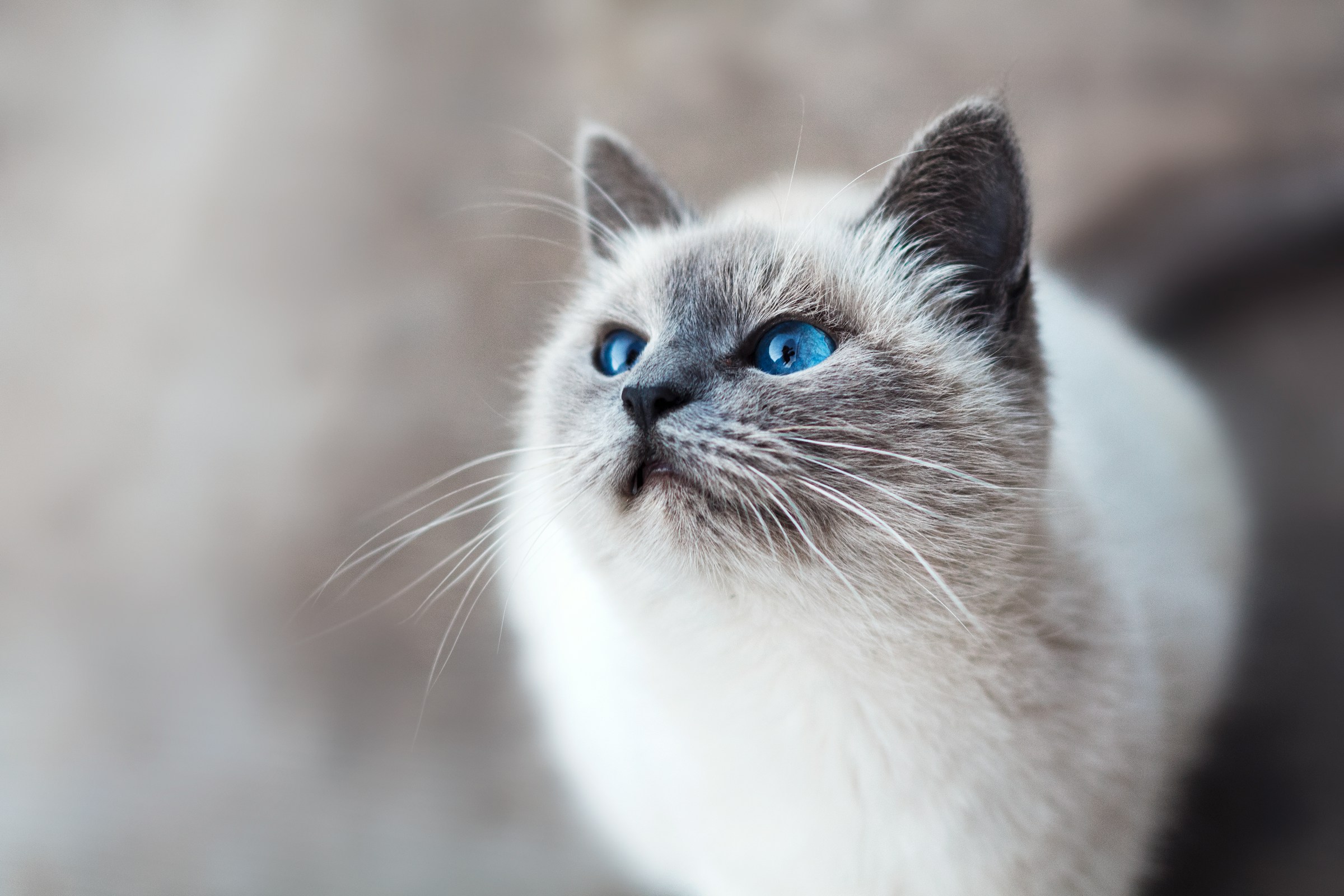Identifying the Initial Symptoms of Diabetes in Your Beloved Cat: A Complete Guide
Understanding Diabetes in Cats
Diabetes, or diabetes mellitus, is a common endocrine disorder that affects cats, just as it does humans. It is characterized by the body’s inability to produce enough insulin or to use insulin effectively, leading to high blood glucose levels. For cat owners, recognizing the early signs of diabetes is crucial for providing timely and effective treatment.
Diabetes in cats is often compared to type 2 diabetes in humans, where the body’s cells become less responsive to insulin, and the pancreas may not produce sufficient insulin to meet the body’s needs.
This might interest you : Ultimate Guide to Caring for Your Pet Turtle in a Home Environment: Tips for Optimal Well-Being
Signs and Symptoms of Feline Diabetes
Identifying the initial symptoms of diabetes in your cat can be challenging, but being aware of the classic signs can help you seek veterinary care early.
Common Clinical Signs
- Increased Thirst and Urination: One of the most noticeable signs is polydipsia (increased thirst) and polyuria (increased urination). Your cat may drink more water than usual and use the litter box more frequently.
- Weight Loss: Despite an increased appetite, diabetic cats often lose weight due to the body’s inability to use glucose for energy. This leads to the breakdown of fat and muscle for energy, resulting in weight loss.
- Increased Appetite: Many diabetic cats experience an increase in appetite, known as polyphagia, as the body attempts to compensate for the lack of glucose entering the cells.
- Lethargy: High blood glucose levels can cause lethargy and weakness in cats, making them less active than usual.
Other Symptoms
- Weakness and Fatigue: Diabetic cats may exhibit general weakness and fatigue.
- Vision Problems: Although less common in cats than in dogs, vision problems due to cataracts can occur.
- Diabetic Neuropathy: This can cause abnormal posture, such as walking on the rear legs (plantigrade posture), and other nerve-related issues like inappropriate elimination and irritability.
Here is a detailed list of symptoms to look out for:
In parallel : Essential Guide to Caring for a Pet Rat with Respiratory Problems: Tips for Optimal Health
- Increased thirst and urination
- Weight loss despite increased appetite
- Lethargy and weakness
- Increased appetite
- Vision problems (rare)
- Diabetic neuropathy (abnormal posture, inappropriate elimination)
- Genital infections or other infections due to high glucose levels
Diagnosing Diabetes in Cats
Diagnosing diabetes in cats involves several tests and examinations.
Blood Tests
- Fasting Blood Glucose: Your vet may perform a fasting blood glucose test to measure your cat’s blood glucose levels after a period of fasting.
- Glucose Tolerance Test: This test measures blood glucose levels after your cat has been given a glucose load.
- Glycated Hemoglobin (HbA1c): This test provides an average of your cat’s blood glucose levels over the past few weeks.
Urinalysis
- Your vet may also perform a urinalysis to check for the presence of glucose in the urine, which is a common indicator of diabetes.
Here is a comparison of the diagnostic tests:
| Test | Description | Indicators |
|---|---|---|
| Fasting Blood Glucose | Measures blood glucose after fasting | ≥ 200 mg/dL indicates diabetes |
| Glucose Tolerance Test | Measures blood glucose after glucose load | ≥ 200 mg/dL indicates diabetes |
| Glycated Hemoglobin (HbA1c) | Measures average blood glucose over weeks | ≥ 6.5% indicates diabetes |
| Urinalysis | Checks for glucose in urine | Presence of glucose indicates diabetes |
Treatment and Management of Feline Diabetes
Managing diabetes in cats requires a multi-faceted approach that includes insulin therapy, dietary changes, and regular monitoring.
Insulin Therapy
- Insulin injections are a crucial part of managing diabetes in cats. Your vet will help you determine the appropriate dosage and schedule for insulin injections. It is important to administer insulin consistently to maintain stable blood glucose levels.
Dietary Changes
- A healthy diet high in protein and low in complex carbohydrates can help manage blood sugar levels. Consult with your vet to choose the best diet for your diabetic cat. Weight loss, if your cat is overweight, is also essential for improving insulin sensitivity.
Monitoring Blood Glucose Levels
- Regular monitoring of your cat’s blood glucose levels at home can help you adjust the treatment plan as needed. This involves using a glucometer to check blood glucose levels, especially after meals and before insulin injections.
Here are some practical tips for monitoring and managing your cat’s diabetes at home:
- Use a Glucometer: Regularly check your cat’s blood glucose levels to ensure they are within the target range.
- Maintain a Consistent Schedule: Administer insulin and feed your cat at the same times every day to keep blood glucose levels stable.
- Monitor Water Intake and Urination: Keep an eye on your cat’s water intake and urination habits to detect any changes that might indicate a need for adjustment in the treatment plan.
- Consult Your Vet Regularly: Regular check-ups with your vet are crucial for adjusting the treatment plan and ensuring your cat’s diabetes is well-managed.
Natural Supplements and Alternative Treatments
While insulin therapy is the primary treatment for diabetes in cats, some owners explore natural supplements to complement their cat’s treatment.
Blood Sugar Gold and Other Supplements
- Products like Blood Sugar Gold can help lower and control blood sugar levels. However, it is crucial to use these supplements under the guidance of your vet and to monitor blood sugar levels closely to avoid hypoglycemia. As one cat owner noted, “If you give both the problem will be that your pet will become hypoglycemic and can be fatal if you are not around or fast enough to bring the sugar back up”.
Here is what you need to know about using natural supplements:
- Consult Your Vet: Before adding any supplements to your cat’s treatment plan, consult with your vet to ensure they are safe and effective.
- Monitor Blood Sugar Levels: Regularly check your cat’s blood sugar levels to avoid hypoglycemia.
- Avoid Overlapping Treatments: Do not use insulin and supplements simultaneously without your vet’s advice, as this can lead to dangerous drops in blood sugar levels.
Preventing Complications and Ensuring Quality of Life
Preventing complications and ensuring your diabetic cat has a good quality of life involves several key steps.
Regular Veterinary Check-Ups
- Regular visits to your vet are essential for monitoring your cat’s condition and adjusting the treatment plan as needed.
Maintaining a Healthy Lifestyle
- Ensuring your cat maintains a healthy weight through diet and exercise can significantly improve insulin sensitivity and overall health.
Monitoring for Secondary Conditions
- Diabetic cats are more prone to secondary conditions such as urinary tract infections, kidney disease, and liver problems. Regular monitoring can help detect these issues early.
Here is a summary of how to prevent complications:
- Regular Vet Visits: Schedule regular check-ups with your vet to monitor your cat’s condition.
- Healthy Lifestyle: Maintain a healthy diet and encourage regular exercise to keep your cat at a healthy weight.
- Monitor for Secondary Conditions: Keep an eye out for signs of secondary conditions such as urinary tract infections or kidney disease.
Diabetes in cats is a manageable condition if identified early and treated properly. By being aware of the initial symptoms, understanding the diagnostic process, and following a comprehensive treatment plan, you can help your cat live a healthy and happy life despite the diagnosis.
As a responsible and caring cat owner, it is crucial to work closely with your vet to tailor a treatment plan that suits your cat’s specific needs. With the right approach, your diabetic cat can thrive, and you can enjoy many more years of companionship and joy together.













